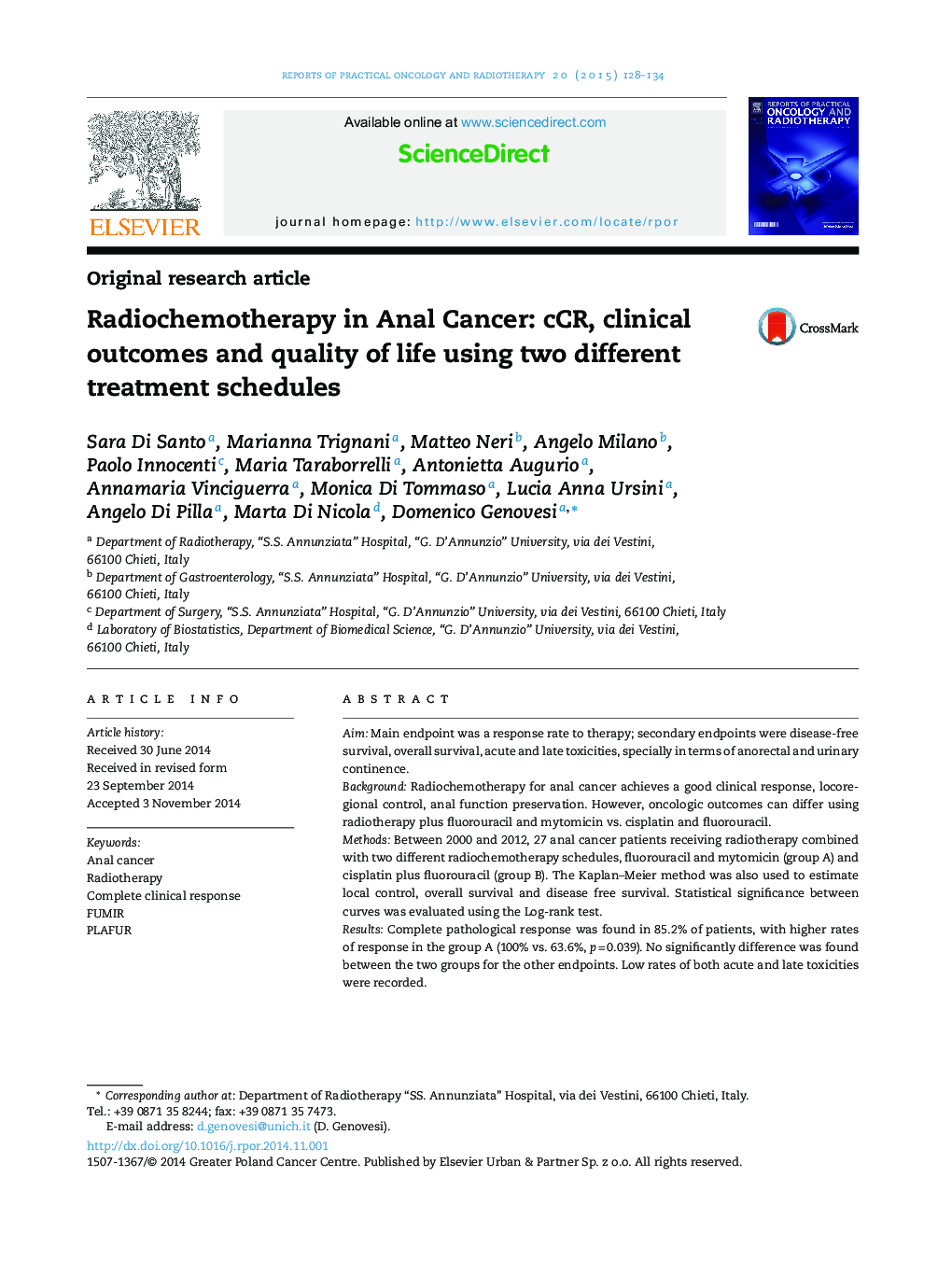| Article ID | Journal | Published Year | Pages | File Type |
|---|---|---|---|---|
| 1854287 | Reports of Practical Oncology & Radiotherapy | 2015 | 7 Pages |
AimMain endpoint was a response rate to therapy; secondary endpoints were disease-free survival, overall survival, acute and late toxicities, specially in terms of anorectal and urinary continence.BackgroundRadiochemotherapy for anal cancer achieves a good clinical response, locoregional control, anal function preservation. However, oncologic outcomes can differ using radiotherapy plus fluorouracil and mytomicin vs. cisplatin and fluorouracil.MethodsBetween 2000 and 2012, 27 anal cancer patients receiving radiotherapy combined with two different radiochemotherapy schedules, fluorouracil and mytomicin (group A) and cisplatin plus fluorouracil (group B). The Kaplan–Meier method was also used to estimate local control, overall survival and disease free survival. Statistical significance between curves was evaluated using the Log-rank test.ResultsComplete pathological response was found in 85.2% of patients, with higher rates of response in the group A (100% vs. 63.6%, p = 0.039). No significantly difference was found between the two groups for the other endpoints. Low rates of both acute and late toxicities were recorded.ConclusionRadiotherapy plus fluorouracil and mytomicin provide a better complete pathological response than radiotherapy plus cisplatin and fluorouracil and a greater rate of anal sphincter function preservation. Globally, radiochemotherapy of the anal cancer provides excellent clinical outcomes with a good profile of acute and late toxicity, without difference between the two groups studied.
